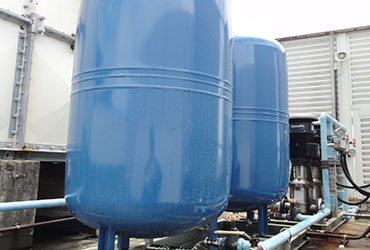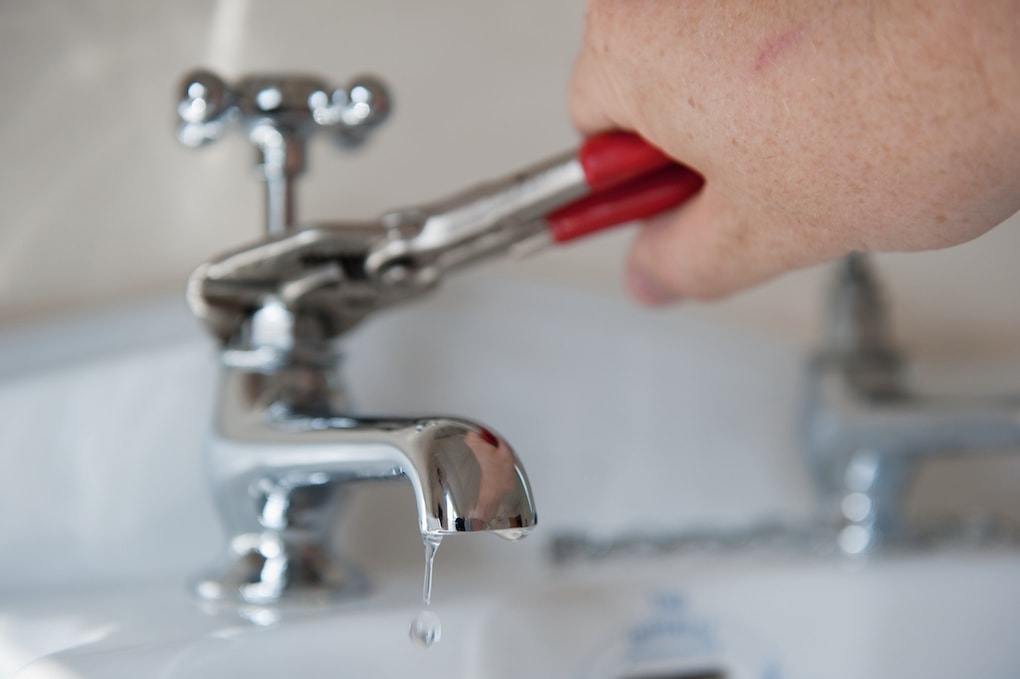Clear Methods for Addressing Low Water Pressure in Your Home
Clear Methods for Addressing Low Water Pressure in Your Home
Blog Article
We have unearthed the article about Low Water Pressure in the House? listed below on the internet and figured it made sense to talk about it with you on this site.

Low water stress in your home can be an aggravating trouble, influencing everything from bathing to washing recipes. If you're experiencing weak water flow, there are numerous possible causes and solutions to discover. In this guide, we'll go over typical reasons for low tide stress and useful actions to address the concern properly.
Intro to Low Tide Pressure
Low water stress takes place when the flow of water from your taps, showers, and other fixtures is weaker than normal. This can make everyday tasks more challenging and much less reliable. Understanding the causes of low water stress is vital to finding the appropriate option.
Common Causes of Low Water Stress
Pipeline Obstructions
Over time, pipes can become obstructed with mineral deposits, debris, or debris, restricting the circulation of water. This is an usual concern in older homes with galvanized steel pipes.
Rust
Corrosion within pipelines can bring about leakages and decreased water stress. Corrosion accumulation can constrict water flow, particularly in maturing plumbing systems.
Faulty Stress Regulatory Authorities
Pressure regulators are accountable for maintaining regular water pressure in your home. If they malfunction, it can result in low tide stress or irregular flow throughout your house.
Municipal Supply Of Water Issues
In some cases, the trouble exists outside your home. Community water system issues, such as main line leaks or maintenance work, can temporarily reduce water stress in your location.
How to Diagnose Low Water Stress
Examining Faucets and Fixtures
Start by examining the water pressure at various faucets and components throughout your home. If the issue is separated to particular areas, it may suggest local troubles.
Examining Pipes
Evaluate noticeable pipelines for indications of leaks, corrosion, or clogs. Focus on any kind of uncommon sounds, such as banging or rattling pipelines, which might indicate concerns within the plumbing system.
Consulting with a Plumber
If you're incapable to identify the cause of low tide pressure, consider working with an expert plumber to carry out a comprehensive assessment. They can determine underlying issues and advise appropriate options.
DIY Solutions to Fix Low Water Stress
Cleaning Up Aerators and Showerheads
Mineral deposits can accumulate in aerators and showerheads, minimizing water flow. Eliminate and cleanse these components consistently to enhance water stress.
Flushing Hot Water Heater
Debris buildup in the hot water heater can restrict flow and reduce performance. Flushing the container regularly aids get rid of debris and keep ideal performance.
Checking Stress Regulatory Authority
Make sure that the stress regulator is functioning appropriately. Adjusting or changing the regulator can assist recover appropriate water pressure throughout your home.
Clearing Clogs in Pipes
For small blockages, try making use of a plumbing snake or chemical drainpipe cleaner to clear obstructions in pipes. Beware when using chemicals and comply with security standards.
When to Call a Specialist Plumber
If DIY efforts stop working to solve the issue or if you suspect considerable plumbing issues, it's best to seek help from an accredited plumber. They have the know-how and devices to address complicated concerns safely and effectively.
Preventive Measures to Maintain Water Stress
Normal Maintenance
Schedule routine maintenance for your plumbing system to avoid concerns such as corrosion, leaks, and obstructions. Resolving minor problems early can help prevent more significant fixings in the future.
Installing a Pressure Booster
Think about setting up a pressure booster pump to improve water stress in locations with consistently low circulation. This can be especially valuable for multi-story homes or residential properties with high-demand fixtures.
Monitoring Water Use
Be mindful of water use practices and prevent overtaxing the plumbing system. Easy changes, such as staggering showers and washing loads, can assist keep ample water pressure.
Verdict
Dealing with low water stress can be irritating, but determining the underlying causes and carrying out ideal options can restore optimum circulation throughout your home. Whether it's cleaning aerators, examining pipes, or speaking with a plumber, taking proactive steps can make sure a steady supply of water for your daily needs.
FOUR WAYS TO FIX LOW WATER PRESSURE NOW
Turning on a shower or faucet only to find the water comes out in a sad, slow drizzle is never a good feeling. How exactly are you supposed to wash a pan or take a quick shower when it takes 10 minutes just to rinse off a little soap? The good news is that when your water pressure is bad, there's always a cause: typically one that can be easily fixed. Here are some of the most common causes of low pressure and what you can do to fix the issue:
DEBRIS AND MINERAL DEPOSIT BUILDUPS
If you notice low water pressure from just one or two of the fixtures in your house, the problem likely has to do with debris buildup. Water is full of minerals and other debris, all of which can accumulate in your pipes and on your fixtures. This can cause a blockage that affects how much water flows through. To fix this, try filling a small plastic bag with white vinegar, and use a rubber band to hang it around your showerhead or faucet. Let the head of the fixture soak for a few hours, and the vinegar should loosen the deposits.
WATER LEAKS
Leaks are another common cause of low water pressure. If water is flowing out of your plumbing through a hole or crack before it can reach your fixture, the pressure coming out of the faucet or showerhead will be lower. A plumbing professional is your best bet for finding and repairing a leak in your water supply pipes.
Leaks are another common cause of low water pressure. If water is flowing out of your plumbing through a hole or crack before it can reach your fixture, the pressure coming out of the faucet or showerhead will be lower. A plumbing professional is your best bet for finding and repairing a leak in your water supply pipes.
FOUR WAYS TO FIX LOW WATER PRESSURE NOW
Turning on a shower or faucet only to find the water comes out in a sad, slow drizzle is never a good feeling. How exactly are you supposed to wash a pan or take a quick shower when it takes 10 minutes just to rinse off a little soap? The good news is that when your water pressure is bad, there's always a cause: typically one that can be easily fixed. Here are some of the most common causes of low pressure and what you can do to fix the issue:
DEBRIS AND MINERAL DEPOSIT BUILDUPS
If you notice low water pressure from just one or two of the fixtures in your house, the problem likely has to do with debris buildup. Water is full of minerals and other debris, all of which can accumulate in your pipes and on your fixtures. This can cause a blockage that affects how much water flows through. To fix this, try filling a small plastic bag with white vinegar, and use a rubber band to hang it around your showerhead or faucet. Let the head of the fixture soak for a few hours, and the vinegar should loosen the deposits.
WATER LEAKS
Leaks are another common cause of low water pressure. If water is flowing out of your plumbing through a hole or crack before it can reach your fixture, the pressure coming out of the faucet or showerhead will be lower. A plumbing professional is your best bet for finding and repairing a leak in your water supply pipes.
Leaks are another common cause of low water pressure. If water is flowing out of your plumbing through a hole or crack before it can reach your fixture, the pressure coming out of the faucet or showerhead will be lower. A plumbing professional is your best bet for finding and repairing a leak in your water supply pipes.
A VALVE ISSUE
If you have low water pressure throughout your home, check your main shut-off valve to make sure it's completely open. You may also want to see if there's a pressure-reducing valve installed. If there is, have a plumber help you adjust the settings to get the pressure you're looking for.
OTHERS USING WATER
Believe it or not, your low water pressure could be caused by your neighbors. If you notice low pressure at certain times of day, it may be because you and the people living next to you have similar schedules - when everyone is showering at the same time, the pressure will be lower in every home. Low pressure throughout the neighborhood may also be caused by an issue with your municipal water supply. If that's the case, call the supplier to see if they're working on the issue.
https://www.rotorooter.com/blog/water-leaking/low-water-pressure-fixes/

Do you really like reading about ? Place feedback further down. We'd be happy to see your thoughts about this article. We are looking forward that you come back again in the near future. Those who liked our article plz don't forget to share it. Thank you for being here. Return soon.
Click Here Report this page